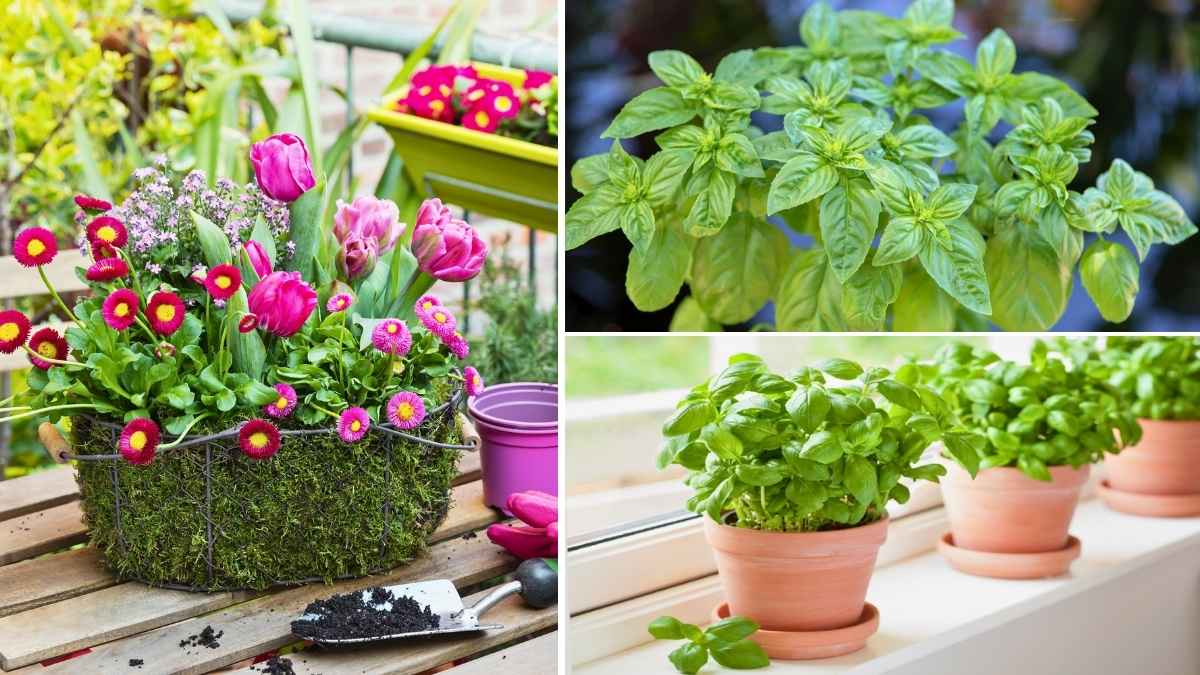Join on WhatsApp
Get the latest updates directly on WhatsApp – motivation, news & more!
Winter may bring shorter days and biting winds, but that doesn’t mean your herb garden has to go into hibernation. In fact, some herbs not only survive but thrive indoors during the colder months. They’re hardy, adaptable, and happy to sit on your windowsill all winter long, laughing in the face of frost.
Growing herbs indoors is more than a convenient way to enhance your cooking it’s also a small act of defiance against the grey chill outside. A pot of fresh green basil or a tuft of rosemary can make a kitchen feel alive in the dead of winter. The best part? You don’t need a greenhouse or special equipment. A sunny window, a few pots, and a little patience are enough to keep your herb game strong all year round.
Here are the best herbs to grow indoors this winter herbs that not only tolerate the indoors but seem to relish it.
Thyme
Thyme is one of those herbs that barely notices the seasonal change. It’s a Mediterranean native, used to poor soil and unpredictable weather, which makes it perfect for winter windowsills. Thyme doesn’t require much water and appreciates a sunny spot, ideally one that gets at least five or six hours of direct sunlight a day.
What makes thyme so rewarding to grow indoors is how versatile it is in the kitchen. From soups and stews to roasted vegetables and meats, it adds a warm, earthy flavor that feels right at home in winter dishes.
When growing thyme indoors, make sure to give it good drainage. A clay pot with a saucer works well, and trimming it regularly encourages bushy, healthy growth. Just snip a few sprigs as needed, and it will keep coming back for more.
Parsley
Often overlooked as a garnish, parsley is actually a powerhouse herb that deserves a front-row seat on your winter windowsill. It’s surprisingly cold-tolerant and does just fine indoors as long as it gets decent light.
There are two main types of parsley flat-leaf (Italian) and curly. Both grow well indoors, though the flat-leaf variety is usually favored for cooking because of its stronger flavor.
Parsley can take a little longer to get going, especially from seed, so if you’re starting in the winter months, it’s best to buy a young plant or use cuttings. Keep the soil moist but not soggy, and give it as much light as possible south-facing windows are ideal. With just a little care, you’ll have a constant supply of fresh, vibrant green leaves even when the snow starts to fall.
Chives
Chives are a cold-weather hero. They’re part of the allium family think onions, leeks, garlic and they have that same subtle, savory bite that lifts winter dishes out of the ordinary. Scrambled eggs, baked potatoes, soups, and dips all benefit from a scattering of freshly snipped chives.
Chives are incredibly easy to grow indoors. If you already have a clump growing in your outdoor garden, you can dig up a section, pot it, and bring it inside before the first hard freeze. If not, they’re widely available in grocery stores or garden centers.
Give them bright light, keep the soil evenly moist, and cut them frequently to keep the plant vigorous. Even if you forget them for a week or two, chives are forgiving and will bounce back quickly once watered and trimmed.
Mint
Mint might be known for spreading aggressively in the garden, but it’s far more well-behaved indoors. It’s a refreshing, fragrant herb that does surprisingly well in pots throughout the winter months. And let’s be honest there’s something oddly satisfying about plucking a few fresh leaves for your tea while the wind howls outside.
Spearmint and peppermint are the most common varieties grown indoors, and both are hardy enough to handle lower light levels than more sun-hungry herbs. Still, place your mint in a bright spot if you can, and rotate the pot regularly to keep it from growing lopsided.
The key with mint is moisture. It likes its soil a little damp, so don’t let it dry out completely between waterings. A shallow pot with a drainage hole works well. You can even propagate new plants by taking cuttings and rooting them in water a fun winter project if you’re feeling garden-starved.
Rosemary
Rosemary might be the toughest herb to keep happy indoors, but when it works, it works beautifully. Its piney, aromatic scent feels tailor-made for winter, and it’s a key ingredient in everything from roasted root vegetables to holiday roasts.
To grow rosemary successfully indoors, treat it like the diva it is. It needs bright, direct sunlight ideally six to eight hours a day. A south-facing window is your best bet. Rosemary also hates wet feet, so make sure your pot drains well and let the soil dry out slightly between waterings.
If your indoor air is dry (as it often is in winter), mist the plant occasionally or place it on a tray filled with pebbles and water to boost humidity. Rosemary doesn’t like sudden changes in temperature either, so keep it away from drafty windows or heating vents. With a little extra attention, rosemary will reward you with bold flavor and a beautifully fragrant presence all winter long.
Oregano
Oregano is another Mediterranean herb that takes winter in stride. It’s robust, flavorful, and low-maintenance just what you want during the colder months. Indoors, oregano prefers a sunny spot and well-draining soil. It can tolerate some neglect and doesn’t require frequent watering, which makes it perfect for busy or forgetful indoor gardeners.
What makes oregano especially appealing is its strong flavor profile. Even a small pot of fresh oregano can elevate pizzas, pastas, and stews. Just like thyme, regular trimming encourages a more compact and productive plant.
If you’ve never grown oregano before, consider starting with a small transplant rather than seeds. It’s a slow starter from seed but grows quickly once established. And once you’ve had the real thing, you’ll never go back to the dried version.
A Winter Garden Within Reach
The beauty of growing herbs indoors in winter isn’t just about convenience it’s about connection. When the landscape outside is bare and the air feels heavy, tending to a little pot of green brings life into the everyday. These herbs not only laugh at frost they remind us that even in the coldest seasons, growth is still possible.
With a few pots, a sunny window, and a little care, you can have a thriving indoor herb garden that adds color, flavor, and a touch of magic to your winter days.




